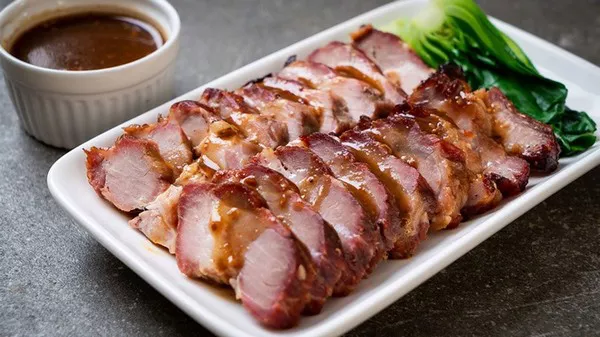Char Siu, a beloved Chinese dish renowned for its succulent and flavorful roasted pork, has captured the hearts and palates of people around the world. One question that often arises in the minds of curious food enthusiasts is, “Why is Char Siu red?” This article aims to explore the intriguing culinary journey of Char Siu’s vibrant hue, uncovering the cultural, historical, and scientific factors behind its iconic red color.
1. The Cultural Significance of Red:
In Chinese culture, red holds deep symbolic meaning. It symbolizes luck, prosperity, and celebration, making it an auspicious color. The vibrant red color of Char Siu carries this cultural significance, and its presence on the dining table is believed to bring good fortune and happiness.
2. Historical Origins:
The origins of Char Siu can be traced back to ancient China, where roasted meats were popularized during the Tang Dynasty (618-907 AD). Initially, these meats were roasted plain, without any marinade. However, as trade and cultural exchange grew along the Silk Road, new ingredients like soy sauce, honey, and spices were introduced. It was during this time that the iconic red marinade, consisting of fermented red bean curd or red yeast rice, began to be used, giving Char Siu its signature color.
3. Red Marinade Ingredients:
The primary ingredient responsible for the red hue of Char Siu is fermented red bean curd or red yeast rice. Fermented red bean curd is made from soybeans fermented with certain bacteria, while red yeast rice is produced by fermenting rice with the Monascus purpureus fungus. These fermentation processes produce pigments called monascins and rubropunctatins, which give the marinade its distinct red color.
4. Natural Food Coloring:
Apart from fermented ingredients, some variations of Char Siu also use natural food colorings to enhance the redness. For instance, beetroot juice, which contains betanin pigment, is sometimes added to achieve a vibrant red hue. These natural colorings provide an alternative method for achieving the desired appearance without altering the original flavors significantly.
5. Chemical Reactions during Cooking:
The red marinade penetrates the meat fibers during the marinating process. When the marinated pork is cooked, a chemical reaction called Maillard reaction occurs, resulting in browning and caramelization. The combination of the browned exterior and the red marinade underneath creates the characteristic reddish glaze that is synonymous with Char Siu.
6. Visual Appeal and Market Demand:
The vibrant red color of Char Siu plays a crucial role in its visual appeal. The bright hues stimulate appetite and make the dish visually enticing. Moreover, as Char Siu gained popularity outside China, the red color became synonymous with authenticity and quality. Thus, even in regions where cultural significance may not be paramount, the red color remains a marketable and distinguishing feature.
7. Culinary Evolution and Regional Variations:
Over time, Char Siu has evolved and adapted to different regional cuisines. While the iconic red marinade remains prevalent, there are variations that incorporate local ingredients and spices. For example, Malaysian Char Siu might include flavors like five-spice powder or tamarind, adding a unique twist to the traditional recipe while maintaining the striking red color.
Conclusion:
The vibrant red color of Char Siu is a result of a fascinating interplay between cultural symbolism, historical influences, and scientific processes. Drawing upon centuries of culinary tradition, this iconic dish has captured the world’s attention with its exceptional flavor and eye-catching appearance. Whether enjoyed for its cultural significance or simply appreciated for its sensory delights, Char Siu continues to captivate both the Chinese community and enthusiasts of global cuisine alike.

